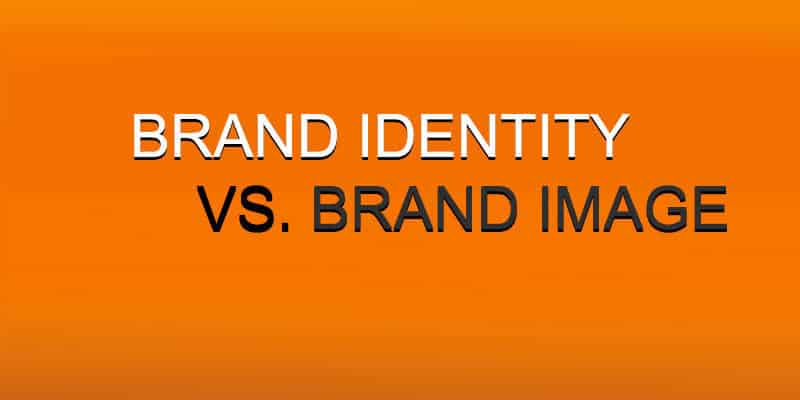Brand’s Identity versus Brand’s Image: What’s The Difference?

What terms come to mind when you think of fast food? For health-conscious people, some of the words might include unhealthy, cheap, and gluttonous. Meanwhile, people who sell fast food perceive it as being affordable, convenient and family-friendly.
This is an example of brand identity vs. image and how the two can differ. The way fast food companies envision the product constitutes its identity, while the way customers perceive it is its image. As you can see, there can be considerable distance between the two. In fact, they can sometimes be diametrically opposed.
As an entrepreneur it helps to think of it as follows; identity is how you want to be seen, while your image is how you’re actually seen. To ensure the two always match, you have to do everything possible to ensure your product or service is truly reflective of the identity you project.
The Elements of Identity
All of the visible aspects of your brand, including your logo, the name of your product, the color scheme you employ and the tagline you deploy all serve to create the identity of your brand. Ideally, this identity should be based upon your vision, core mission, values and overall objectives. Said simply, it’s the way you portray yourself and your products to the public. When this is done well, all of these elements come together as a positive identity upon which a favorable image can be built. However, it only takes one misstep to completely undo all of those efforts.
The Determinants of Image
The beliefs, ideas and impressions held by customers about your brand define your image in the marketplace. These can come from a variety of sources including practical experience, word of mouth, the veracity of your promotional campaigns and the overall performance of your people and products.
As a result, your image can turn on a dime.
As this is being written, a number of companies are mounting “apology” campaigns to attempt to reshape their images in the minds of consumers. Wells Fargo Bank, Uber and Facebook developed image problems because of behaviors in which people employed by the companies were engaging.
Despite all the effort they had put in over the years to project the identity they wanted to the public to perceive, behaviors tarnished their images. In the case of Wells Fargo, nearly 200 years of goodwill were reversed by acts of malfeasance.
The Takeaway?
You can create whatever identity you’d like for your company. You can develop a slick symbol for it with next to no expense with a free logo generator. You can come up with a clever tagline to go along with it and you can wrap it all in a lovely color scheme. But if you fail to perform as advertised, or you’re found to be in violation of the public’s trust, you will encounter an image problem capable of severely debilitating your business.
Remarkably, while circumstances can dim your aura overnight, it can take years to develop it in the first place. Remember, your image is a function of the market’s perception of your brand. This means word has to circulate and your reputation must gain momentum before it becomes public perception.
Thus, when it comes to brand identity vs. image, while it’s extremely important to craft your identity with care, it’s even more important to do everything possible to ensure your image is viewed in a positive light. At the end of the day, how you see yourself (while certainly important to your overall presentation) doesn’t carry nearly as much weight as how the public sees you.
Have you read?
# Top Colleges And Universities To Study International Relations: Foreign Policy 2018 Rankings.
# Top CEOs And Business Leaders On Twitter: You Should Be Following.
# World’s Best Countries To Invest In Or Do Business For 2018.
# Richest Families In The United States, 2018.
Bring the best of the CEOWORLD magazine's global journalism to audiences in the United States and around the world. - Add CEOWORLD magazine to your Google News feed.
Follow CEOWORLD magazine headlines on: Google News, LinkedIn, Twitter, and Facebook.
Copyright 2025 The CEOWORLD magazine. All rights reserved. This material (and any extract from it) must not be copied, redistributed or placed on any website, without CEOWORLD magazine' prior written consent. For media queries, please contact: info@ceoworld.biz








